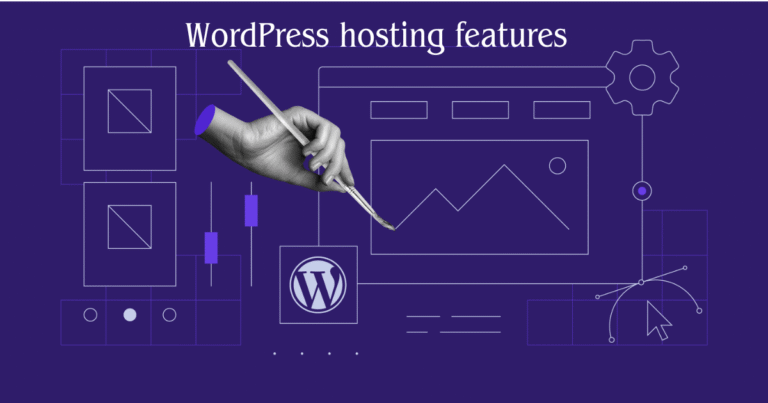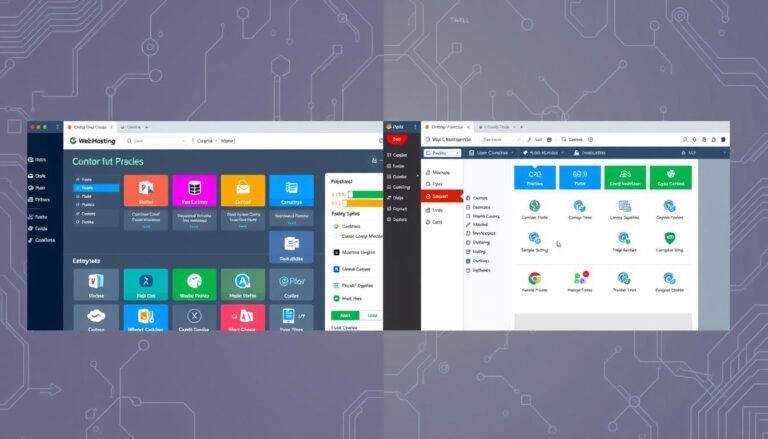How To Pick The Right Linux Hosting Panel For Your Website ?
Choosing the right Linux hosting control panel is one of the most crucial decisions you’ll make when managing a web server. A good control panel not only simplifies server administration but also enhances security, performance, and usability for both developers and non-technical users.
In this guide, we’ll walk you through everything you need to know to choose the right Linux hosting panel, including essential features, types of panels, pros and cons, and real-world considerations.
Understanding What a Linux Hosting Panel Is
A Linux hosting control panel is a web-based interface that allows you to manage your Linux server without needing deep technical expertise or command-line experience. From creating email accounts and databases to managing domains and security, the panel centralizes server control in an accessible dashboard.
Why Use a Control Panel?
- Simplifies server tasks
- Provides visual interface for settings
- Helps manage multiple websites
- Offers monitoring, backup, and automation tools
- Improves security configuration
Types of Linux Hosting Panels
Linux hosting panels can be categorized based on licensing, user base, and complexity. Below are the main types:
1. Commercial Control Panels

These are premium panels that offer rich features, professional support, and regular updates. They are ideal for hosting businesses or advanced users who need stability and comprehensive control.
2. Open-Source Control Panels
Open-source panels are free and community-driven. They are perfect for developers, startups, and those with limited budgets who are comfortable with some level of manual configuration.
3. Minimalist or Lightweight Panels
These panels are designed for users who prefer simplicity, use low-resource servers, or only need basic website hosting features.
Key Features to Consider When Choosing a Linux Hosting Panel
Not all control panels are created equal. Here’s what you should consider:
1. User Interface and Usability
Look for a panel that offers an intuitive and responsive design. If you’re new to hosting, a clean layout with helpful tooltips and easy navigation is essential.
2. Operating System Compatibility
Most Linux panels support distributions like CentOS, Ubuntu, Debian, and AlmaLinux. Ensure the panel you’re considering is compatible with your server’s OS.
3. Domain and DNS Management
Your hosting panel should allow you to easily add, remove, and manage domains and DNS settings without touching the command line.
4. Email Management
Full control over mailboxes, forwarders, autoresponders, and spam filters is a must. Look for panels that offer a built-in mail server or easy integration.
5. Database Support
A good Linux panel should support popular database engines like MySQL, MariaDB, and PostgreSQL, with GUI access and remote configuration options.
6. File Management
Ensure the panel includes a file manager with drag-and-drop upload, permission control, and file editing capabilities.
7. Security Tools

Important security features include:
- SSL certificate integration
- IP blocking
- Firewall management
- Two-factor authentication
- Brute force protection
8. Backup and Restore Capabilities
Look for panels that support scheduled backups, cloud storage options, and one-click restoration. This is crucial for disaster recovery.
9. Automation Tools
Cron job scheduling, automatic script installers, and app deployment support can save time and reduce errors.
10. Performance Monitoring
Resource usage tracking (CPU, RAM, bandwidth) and logs help you maintain your server’s health and identify issues quickly.
Comparing Popular Features in Panels
| Feature | Commercial Panels | Open Source Panels | Lightweight Panels |
|---|---|---|---|
| Ease of Use | High | Medium | Medium |
| Feature-Rich | Yes | Varies | Limited |
| Cost | Paid | Free | Mostly Free |
| Community Support | Medium | High | Medium |
| Server Resource Usage | Medium to High | Low to Medium | Low |
How to Match a Control Panel to Your Needs
Before deciding, consider your goals, level of experience, and technical requirements.
Are You a Beginner?
Choose a panel with a simple layout, pre-configured tools, and good documentation. Avoid complex setups or command-line heavy options.
Are You Running a Business Website?
You’ll need strong backup tools, email management, and support for multiple domains and SSL integration. Opt for a stable and secure panel.
Are You a Developer?
You may want SSH access, Git integration, Docker support, and custom script capabilities. A more advanced panel with flexible settings will be best.
Are You Managing Multiple Websites?
Look for multi-user support, resource allocation, and centralized domain management to simplify operations.
Common Mistakes to Avoid
1. Ignoring System Compatibility
Always confirm the panel works with your OS and server configuration. Incompatibility can lead to broken installations or poor performance.
2. Choosing Based on Appearance Alone
A clean interface is helpful, but don’t overlook the feature set, support, and stability behind it.
3. Overloading with Features You Don’t Need
Too many features can slow down your server and increase complexity. Choose a panel that matches your use case.
4. Skipping Security Considerations

Ensure the panel includes critical security features like firewall controls, malware scanning, and auto-updates.
5. Failing to Test First
Many panels offer demo versions or trial periods. Test before committing, especially on live environments.
Installation and Maintenance Tips
- Always update the panel to the latest version.
- Use a virtual machine or staging server for testing.
- Secure your login credentials and use strong passwords.
- Set up automatic backups.
- Monitor performance and log errors regularly.
Performance and Resource Usage
Lightweight panels are better for small servers or VPS environments with limited CPU and RAM. Heavier, feature-rich panels may require higher system specs but offer better functionality for larger operations.
Customization and Extensibility
Some panels allow plugin installations, scripting, or API access for automation. Consider these options if you plan to scale or integrate external tools.
Also Read : Linux Hosting Explained: Why It’s A Top Choice For Websites
Conclusion
Picking the right Linux hosting panel for your website depends on your specific needs, technical expertise, and long-term goals. Whether you’re a developer, a small business owner, or managing a large number of websites, there’s a control panel out there that fits your requirements. Take your time to test, evaluate features, and prioritize usability and security. The right decision will save you hours of server management and help ensure your hosting experience is smooth and efficient.
FAQs
Q1: Can I switch hosting panels after installing one?
Yes, but switching can be complicated. You may need to manually migrate files, databases, and configurations. It’s best to choose carefully from the start.
Q2: Are all Linux hosting panels free?
No. Some are free and open-source, while others require a paid license. Many premium panels offer more support and features, but open-source options can be very powerful if properly managed.
Q3: Which Linux distribution is best for hosting panels?
Distributions like CentOS, AlmaLinux, Ubuntu, and Debian are commonly used. Your panel choice may limit or recommend a specific distro.
Q4: Do I need a control panel to manage a Linux server?
No, but it makes management much easier, especially for non-technical users. Without a control panel, you’ll need to handle everything through the terminal.
Q5: Can I host multiple websites with one panel?
Yes. Most panels support multi-domain hosting, allowing you to manage several websites from one dashboard.







